Google Maps Comparo: Public Transit vs. Driving vs. Walking Across NYC
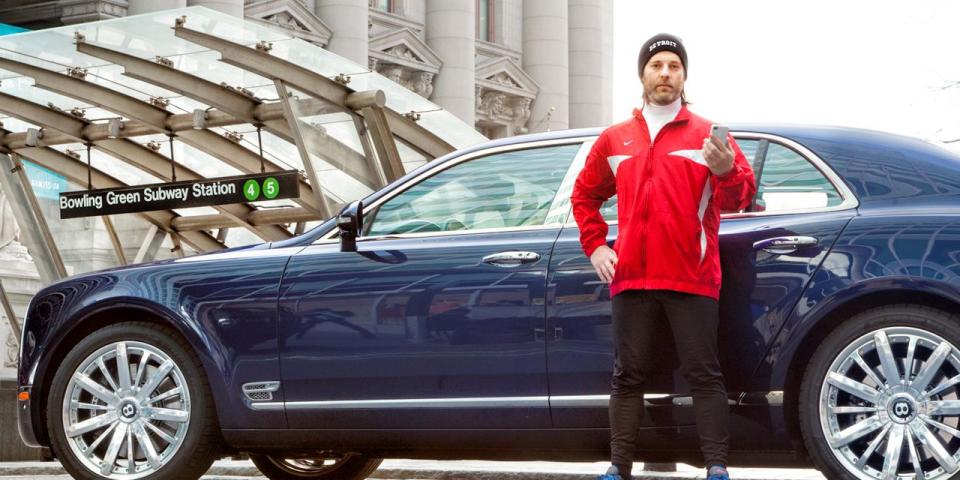
From the June 2013 Issue of Car and Driver
In September 2012, Apple jettisoned Google Maps from its iOS 6 operating system and a maelstrom ensued. Users complained, refusing to update their devices, and Apple CEO Tim Cook soon apologized. The tech giant’s stock plummeted from over $700 per share to $419 in six months. While hardly the sole cause of Apple’s Wall Street woes, Google Maps is undeniably the 800-pound gorilla of navigation. It helps us eke out seconds to grab a latte between just-in-time deliveries of child, spouse, and family materiel. And its turn-by-turn directions for driving, public transit, and walking gave us an idea: We’d compare all three and find out what lies behind those two other buttons we never press.
The obvious problem was how to level the playing field so each method had an equal chance to prove its mettle. So we chose to pit car against public transportation against foot power in New York City, an environment equally hostile to all.
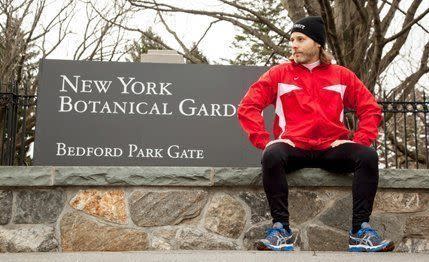
We settled on a trip from the New York Botanical Garden in the Bronx to Battery Park near the southern tip of Manhattan. Stopping for a hot dog at a Papaya King near the halfway point would add a 20-minute layer of complication. Bentley obliged us with a $302,425 Mulsanne for the driving portion, while Google indicated that the best transit route would include both bus and subway stints via the Metropolitan Transportation Authority. And for what was nominally a walking trip, I decided to lace up a new pair of running shoes, vowing to complete what would amount to my first half-marathon in more than a year.
I made the car and transit trips during the morning rush, while the journey on foot took most of an afternoon. I was wired with a heart-rate monitor and a GPS watch, but the measuring tools were overshadowed by my notebook. Indeed, the point was less about the competition than actually learning something about getting around.
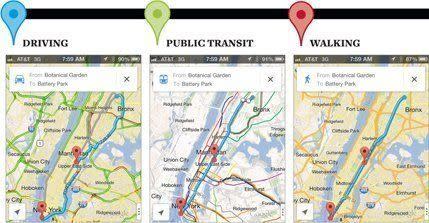
Such as, no matter where you’re going, it always takes more time than expected. None of my trips hit its projected travel time, with the MTA spitting me out in view of the Statue of Liberty some 26 minutes behind schedule and the Bentley arriving 37 minutes “late.” While my run nearly halved Google’s projected walking time, it was still nearly 50 minutes slower than my last race finish, a pace well below the explanations offered by the extra 0.6-mile of distance, a frankfurter-laden belly, and insufficient training.
But the real lesson of this comparo is that no matter the method of transportation, they all work in a symbiosis that keeps New York moving. Over the three days spent racing up and down the Bronx and Manhattan for this story and its accompanying photos, the Bentley was supplanted by numerous cabs and livery vehicles, an unlimited-use MTA pass all but paid for itself in savings, and my shoes got broken in even before my run. The streets of the city demanded it.
At the risk of having my middle-class-liberal card revoked, there’s no other way to put it: Riding public transit sucks. Clearly it just needs more money. From the moment I started the stopwatch, my transit trip was something to be endured rather than enjoyed.
Standing on a Bronx street corner, figuring out which way to walk to the bus stop, I was cold. I would soon be wet, too, as I waited, peering through the rain at my phone and wondering whether it might be faster to walk the half-mile to the subway. It would have been. Once on the bus, I got my first taste of New York’s public transit. Taste, of course, is closely linked to the sense of smell, and the odor was unpleasant, the sort of damp, mildewy fragrance that develops when you pack so many wet people into a single shiny metal box.
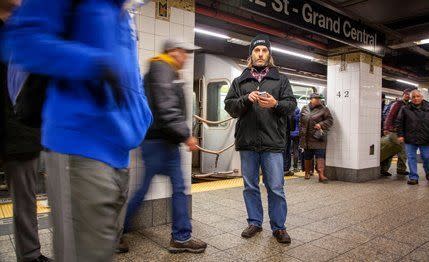
Transferring to the subway, it became apparent that the train offers a similar experience, amplified. When a cab driver has body odor, you can roll down the window. On the subway, you quite literally just suck it up. Two days later, it seemed fair retribution that I took the same train back to my hotel after completing my run.
But the subway did force me closer to a woman than my wife has let me get in the past two weeks. And I was entertained—by the sounds of pop music flittering through many pairs of earbuds, the woman preaching from her bible, and a tiny glimpse of Yankee Stadium as the train sped past.
Then there was the inept busker performing “Hotel California” when I switched trains at 42nd Street. If there’s a better argument against the subway than having to listen to this guy play the Eagles, I can’t make it.
Walking isn’t really an accurate description of what I did, but then neither does the word describe what New Yorkers do when they’re on foot. Everyone runs in New York, whether they’re running to catch the bus or running from someone; bipedal locomotion is not just recreation. But the calories burn the same, their quantity increasing with speed. Walking trumps public transit here largely because of its health benefits, but also because it puts you more directly in the city’s fray.
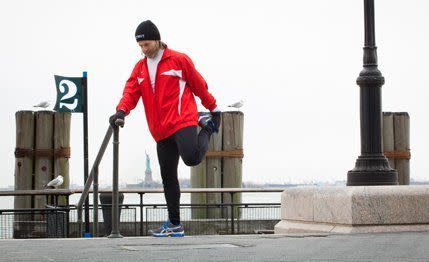
If you truly know a man only after you’ve walked a mile in his shoes, running 13.7 miles in New York City made me feel like the man who knew too much. Such as how New Yorkers don’t bother to clean up after their dogs. Yes, I dodged shit, all kinds of it. And people young and old, bikes, trucks, cabs, and scaffolding poles. Did you know that every single building in Manhattan is under construction? Twice I had to avoid Rascal mobility scooters. An old lady pushing a shopping cart yelled at me to watch where I was going even as I gave her a wide berth. I’ll bet she still thinks Ed Koch is the mayor.
The sidewalk was often more rutted and broken than a mountain trail. I couldn’t maintain a reasonable pace because of the stoplights, and yet my body grew fatigued from all the bobbing and weaving. The Papaya drink at the midway point tasted more delicious than on either of the other trips, yet the pain was also greater.
Driving in Manhattan is a sport. At times it resembles a series of eighth-mile drag races. Jousting with cabs, playing chicken with pedestrians, and processing the city’s sensory overload require a race driver’s concentration and offer similar psychological rewards. In New York, everyone is engaged, and even the bad drivers are paying attention. And when the traffic opens up on FDR Drive, the joy of stomping on the throttle and hitting triple digits in that concrete canyon is more thrilling than on any interstate.
Arriving at Papaya King about 40 minutes after setting out, the car had already created its 16-minute margin of victory over public transit, even though I had encountered the worst of the traffic I would face. Actually, it felt like that delta should have been even greater, despite my having spent more than 10 minutes in stop-and-go traffic to travel one mile over the Triborough Bridge from the Bronx.
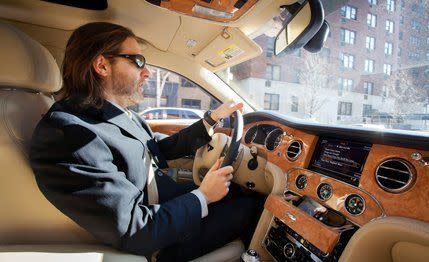
But the Bentley proved expensive, and not just because it was. I spent $7.50 on the bridge toll, and with the trip computer showing the car averaging 8.8 miles per gallon, I don’t even want to calculate its yearly operating cost. To stash the car in a lot for 25 minutes near Battery Park cost $27, and while parking charges were more reasonable in other parts of the city, the car proved burdensome when it wouldn’t actually fit through the door of one underground garage. The solution: Pay the valet to watch the Mulsanne while it was parked illegally on the sidewalk.
This is a car magazine and as such, the car was the odds-on favorite to win. But in doing so, it disabused me of the conventional notion that driving in New York City is just difficult, deleterious, or dumb. It’s actually all those things. Which is what makes it so much fun.
Final ResultsDrivingWalkingPublic TransitGoogle Est. Time45 min4 hr 38 min1 hr 12 minActual Time*1 hr 42 min2 hr 32 min1 hr 58 minTotal Distance18.7 miles13.7 miles15.1 milesAverage Heart Rate64 bpm152 bpm67 bpmPeak Heart Rate99 bpm180 bpm100 bpmCalories Burned1211563137Costs$36
($7.50 bridge toll, $1.50 metered parking, $27 parking garage)None$5.00
(2 MetroCard fares)
*including hot-dog stop.
You Might Also Like

 Yahoo Autos
Yahoo Autos 